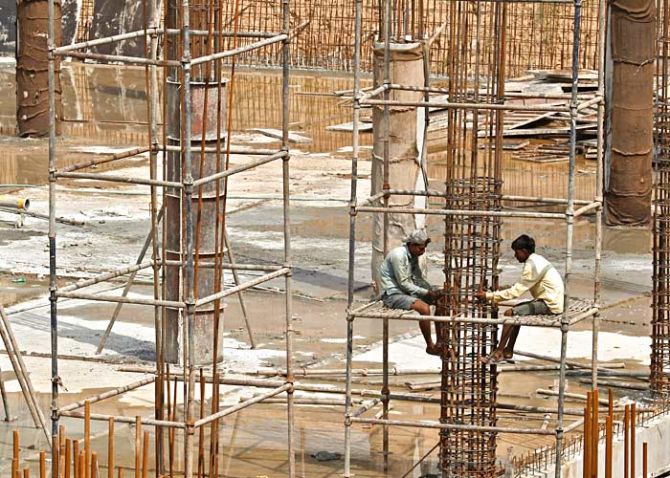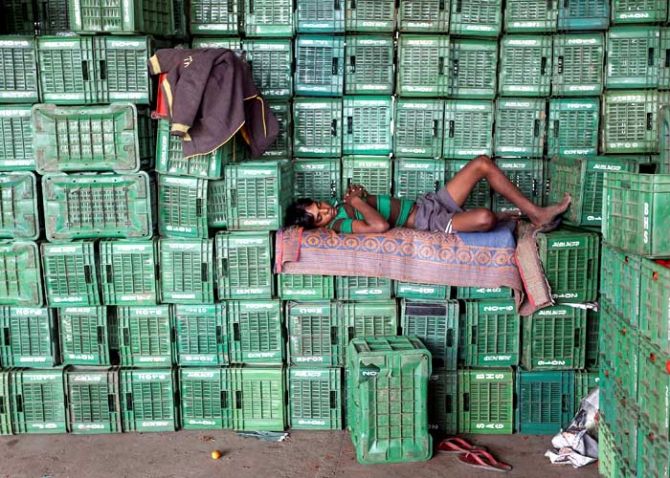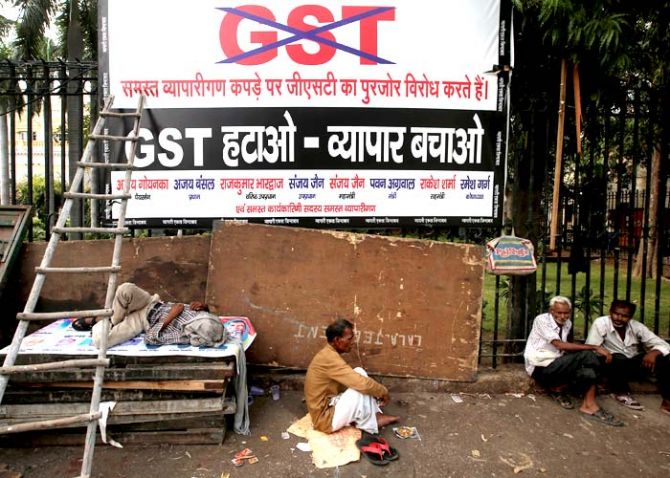 | « Back to article | Print this article |
Why India is an FDI magnet. The country satisfies several reconditions to attract foreign inflows.

Foreign direct investment is looking for a new destination.
Rising labour costs in China and an ageing population in north-east Asia mean the major countries involved in global supply chains have become expensive in terms of manufacturing. Moreover, growth opportunities globally are sparse, and all the while multinational corporations are on the lookout for high-growth markets.
India satisfies many preconditions required to attract FDI.

First, it offers a large market. Favourable demographics, rising per capita income and low penetration of consumer goods and services suggest immense potential. Income growth is likely to be the fastest in the top income bracket, but the number of middle-income consumers is also rising, which can translate into a multi-year consumption boom.
Second, while India always had a large market, it attracted less FDI than its potential because its investment climate was not necessarily as attractive as elsewhere. This is set to change. A swathe of ongoing reforms -- including the goods and services tax, FDI liberalisation, public spending on transport infrastructure, bankruptcy laws, crackdown on corruption, the scrapping of obsolete laws, online clearances -- should pave the way for a better investment climate. Specifically, a comprehensive overhaul of the transportation sector targeting roads, railways, inland waterways, ports and shipping investments will lower costs and enable higher efficiency. 
Third, MNCs are looking for countries that offer sound economic management and are politically stable. In this context, the government’s commitment to fiscal consolidation and the Reserve Bank of India’s focus on ensuring low inflation should ensure macro stability.
Fourth, while the availability of skilled and low-cost labour is not a primary determinant of FDI -- especially, in the age of robots -- both manufacturing and non-manufacturing wages in India are much lower than they are in China. This, along with a growing labour force, could be an added advantage.
To estimate just how much potential FDI India could attract, we use two approaches.
In the first, we take a period of rising FDI inflows into North Asia as a benchmark.

In the second, we empirically estimate the impact of different macroeconomic pull factors in driving FDI inflows using a cross-country panel regression.
An average of the two approaches suggests that gross FDI flows into India could almost triple from $44 billion in 2016 to $126 billion by 2025.
Unlike the open economies in Asia that attract vertical FDI because of their presence in the overall supply chain, we believe that India will attract more horizontal FDI, or FDI largely attracted by the growing domestic market (rather than for just exports).
There is growing evidence of rising interest in India. We looked at the investment commitments made by several MNCs over the last few years and segregated these by country and sector and found two interesting trends.
The sectoral breakdown shows that the largest FDI commitments are in the manufacturing sector, with industrial parks, pharmaceuticals, consumer non-durables, electronics and railways all standing out as areas that have seen large investment commitments.
After manufacturing, renewable energy attracts the next largest FDI commitment. So it is not just the erstwhile telecom, information technology and auto sectors that are seeing an interest from MNCs, but a number of new-economy sectors are also emerging.
The second trend is that unlike in the past, when the bulk of FDI inflows came from the West, the largest FDI commitments are now coming from within the region, especially from Japan and China.

Both the countries are looking outwards due to ageing populations; the former is affected by a contracting market and the latter by overcapacity and rising labour costs.
As FDI inflows into India pick up, the economy can experience a virtuous cycle as rising investment boosts productivity and potential growth, which in turn attracts more FDI. Rising FDI inflows can also ensure a stable source of financing for the current account deficit. The benefits are immense.
Overall, the FDI opportunity has been presented on a platter; it is up to India to seize it.
Sonal Varma is the managing director and chief India economist, Nomura.